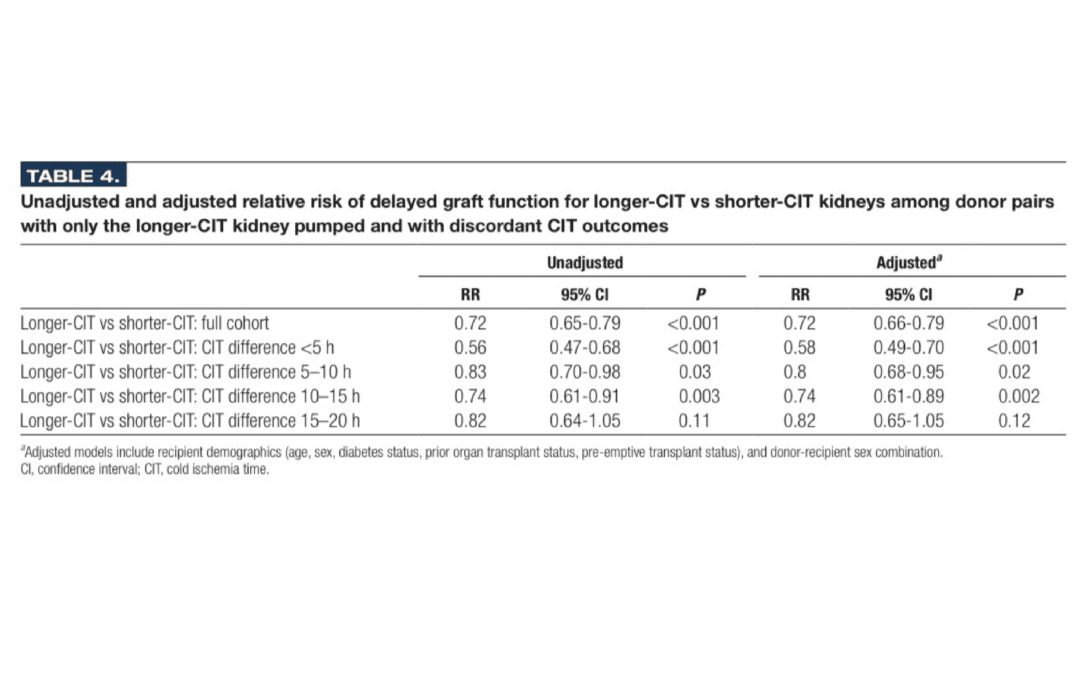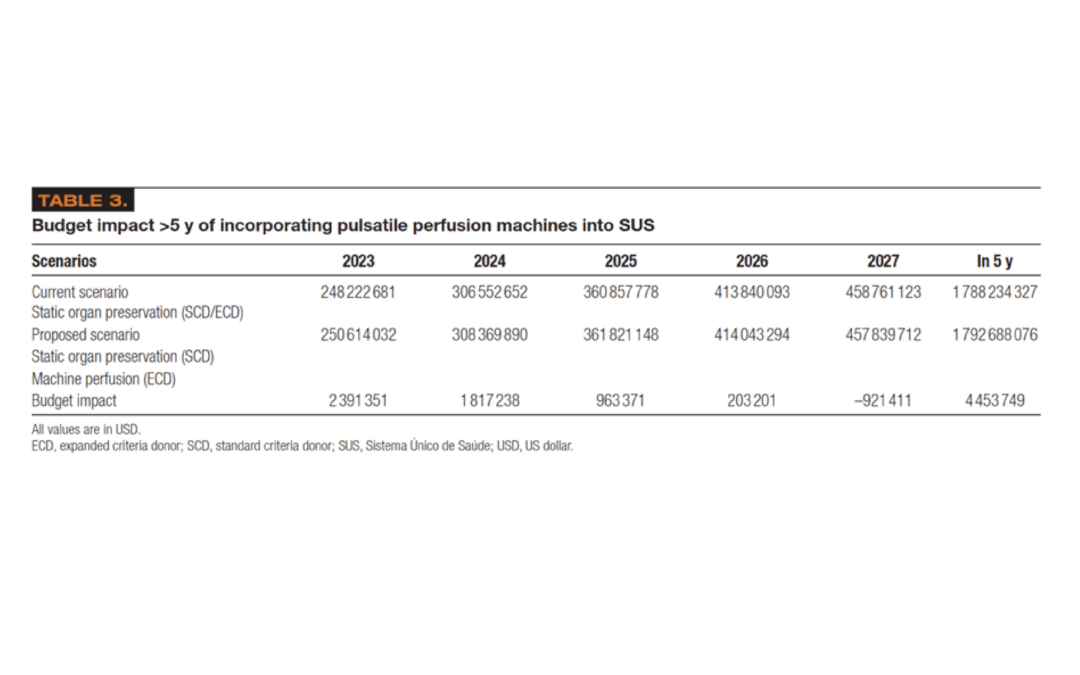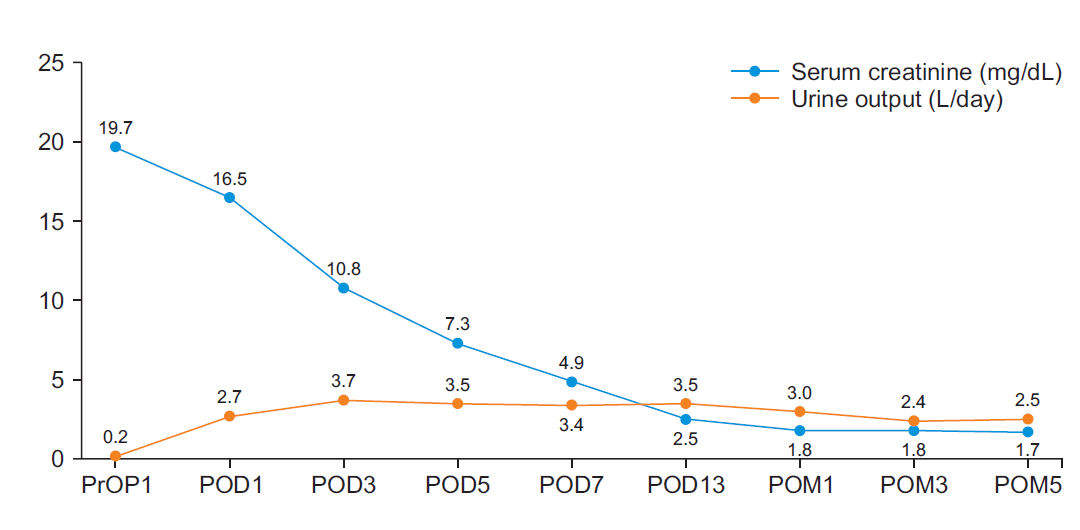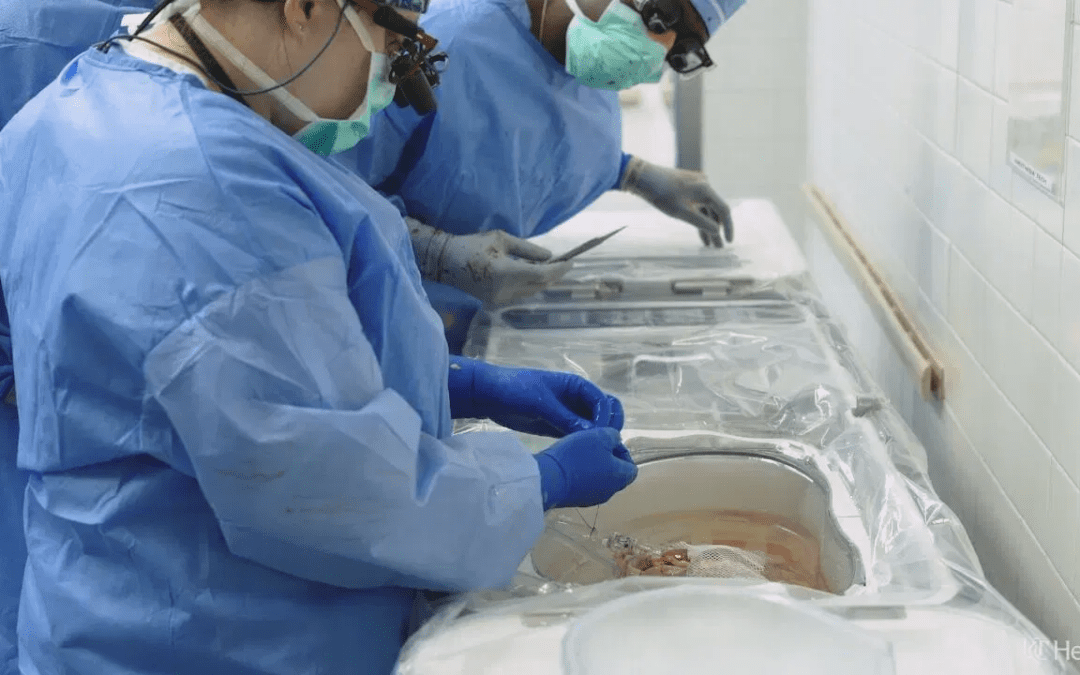An abstract presented at the American Transplant Congress (ATC) in May 2013 by Dr. Victoria Gomez et al. evaluated the budgetary impact and incremental cost-effectiveness of hypothermic machine perfusion compared with static cold storage.1
Kidneys transplanted from expanded criteria donors (ECDs) have a significantly increased incidence of delayed graft function (DGF) compared with kidneys from standard criteria donors,2 which increases post-operative costs due to prolonged hospital stay, the need for dialysis and additional diagnostic procedures.
The short-term cost-effectiveness of ECD transplantation using machine perfusion was reviewed using a probabilistic theoretical decision-tree. The budgetary impact and incremental cost-effectiveness ratio was estimated in terms of the number of DGF and primary non-function (PNF) cases saved by using machine perfusion instead of static cold storage.
The budgetary impact per patient of using machine perfusion was €610, but the incremental cost-effectiveness ratio showed a €16,476 saving for each case of initial graft function achieved. With published data showing that machine perfusion reduces the risk of DGF and PNF compared with static cold storage,3 this study has shown that machine perfusion is a cost effective option despite the initial budgetary impact.
1. Gomez V et al. Economic impact of pulsatile hypothermic perfusion in an expanded criteria donor transplant program. Analysis of the first year since its introduction. Abstract presented at American Transplant Congress, Seattle USA, May 18–22, 2013.
2. Johnson TD et al. Sensitivity of expanded-criteria donor kidneys to cold ischemia time. Clin Transpl 2004;18:28–32.
3. Moers C et al. Machine perfusion or cold storage in deceased-donor kidney transplantation. N Engl J Med 2009;360:7–19.
The Latest




